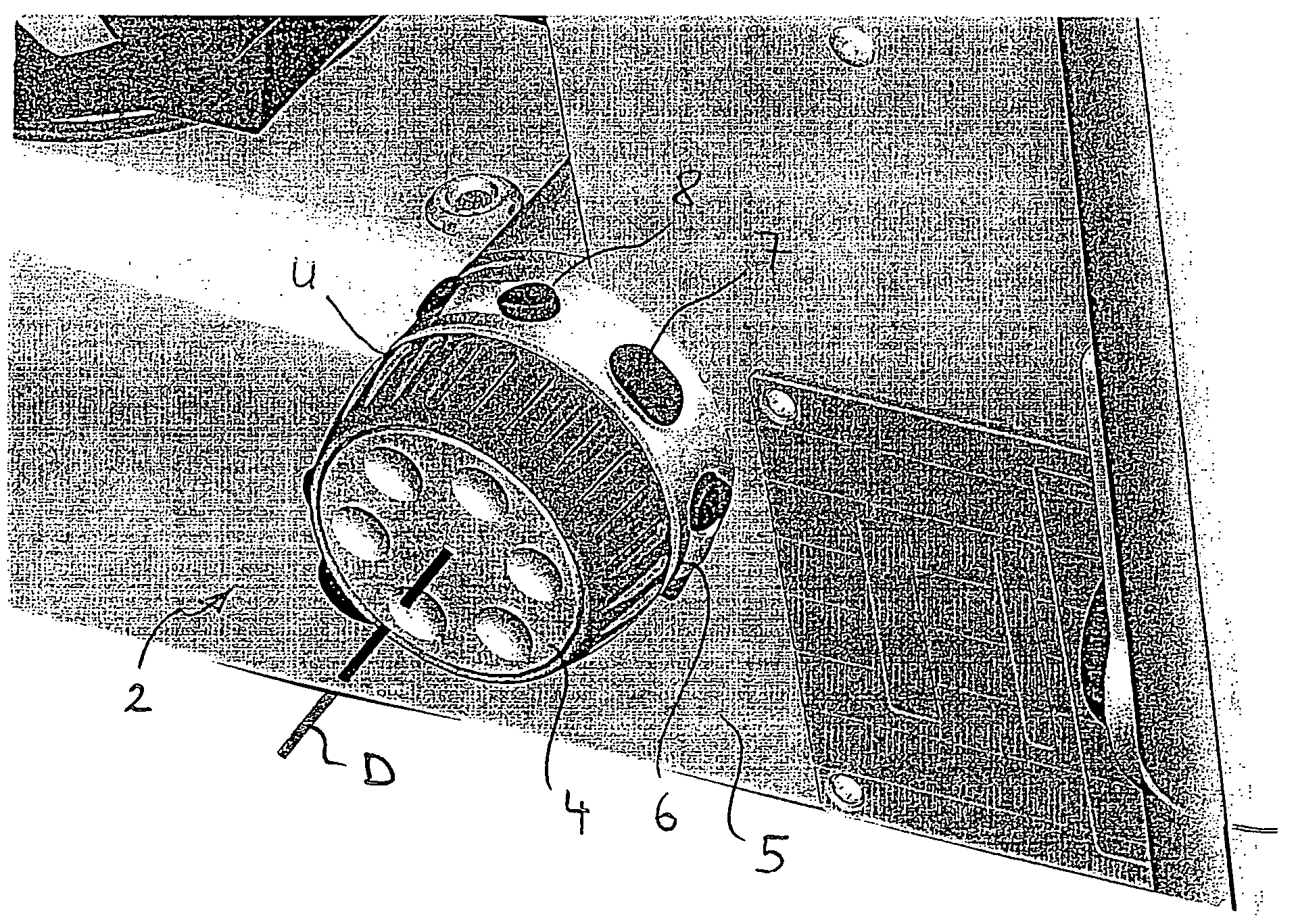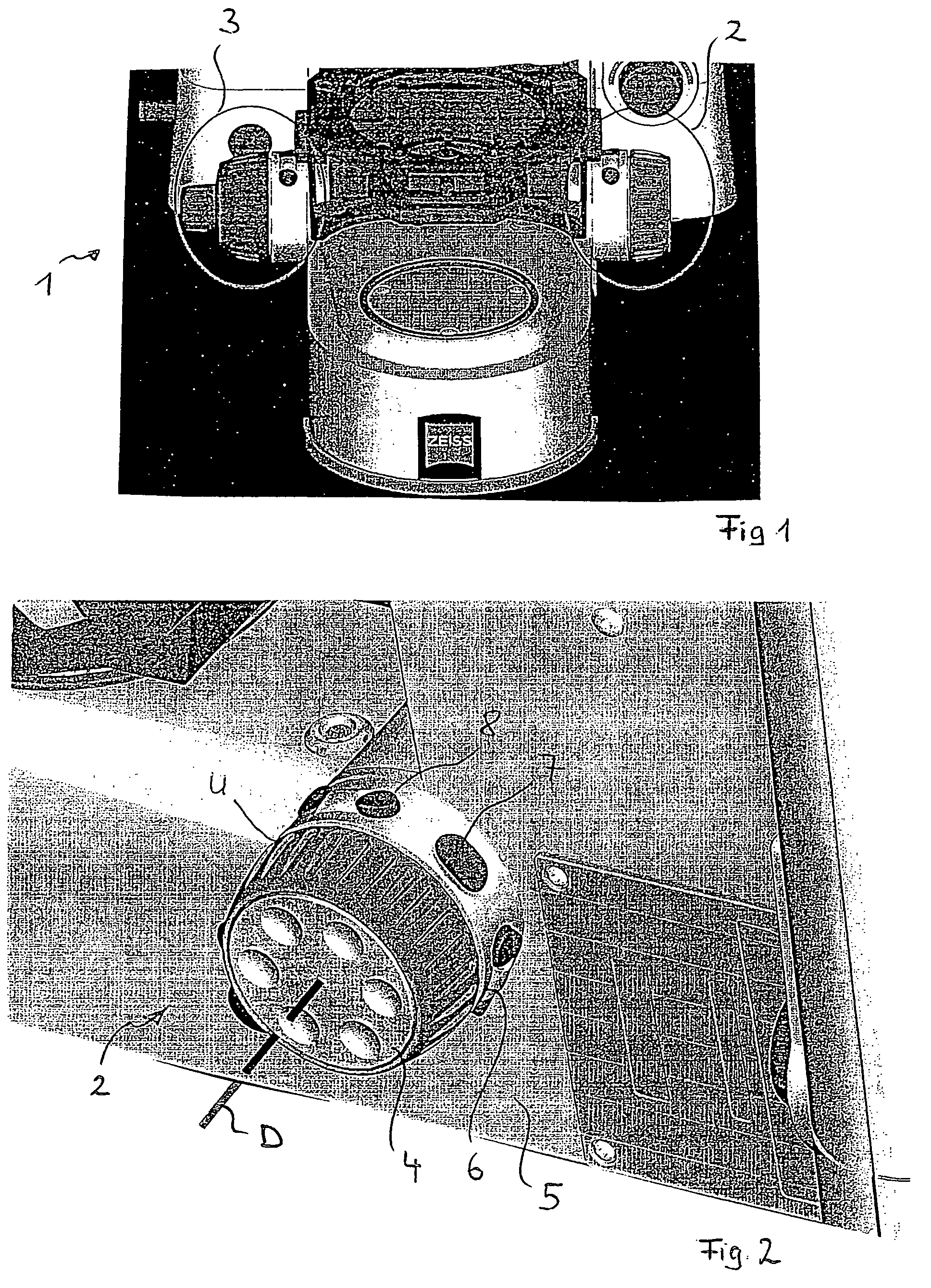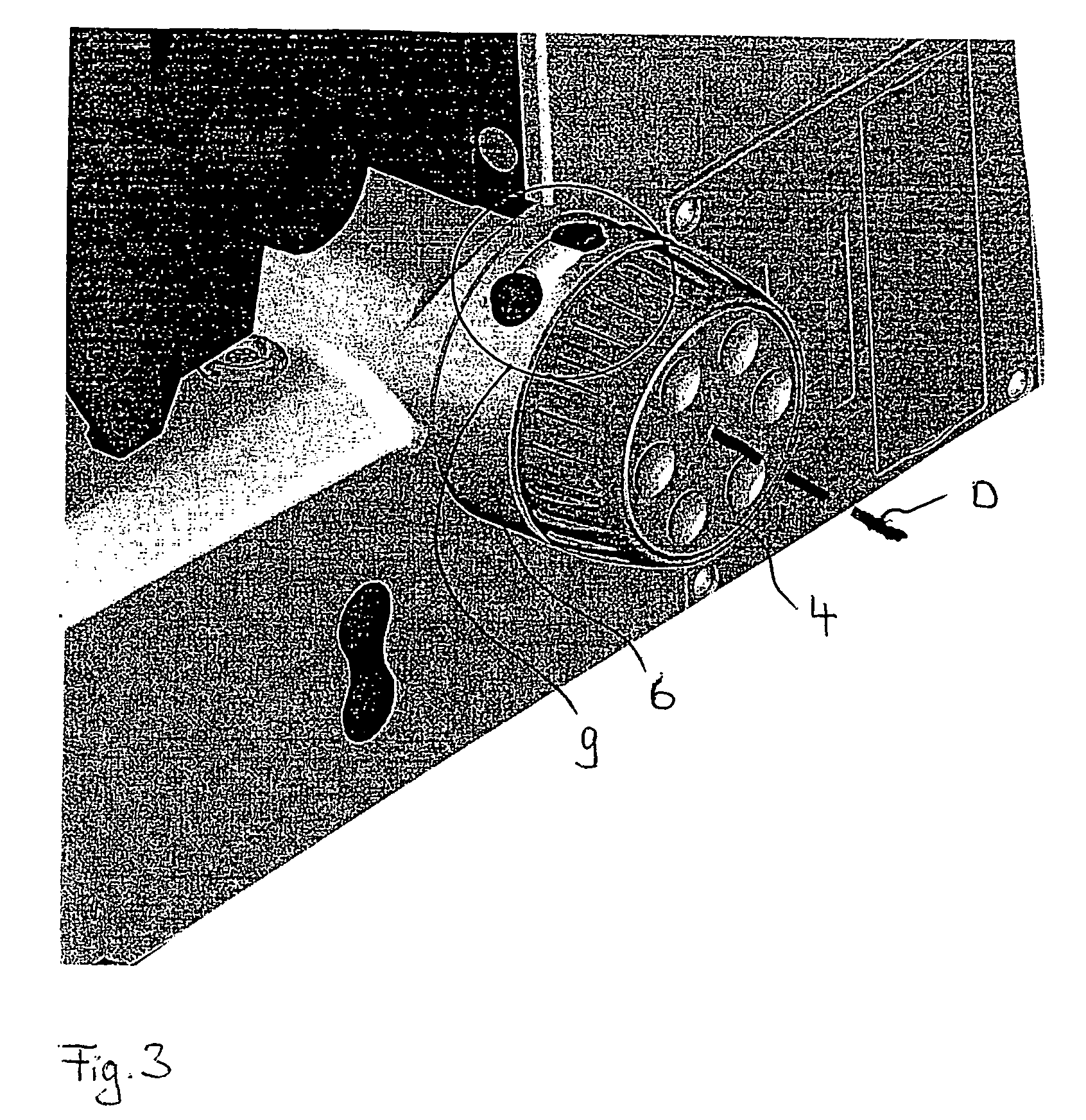Arrangement of operating elements on a microscope
a technology of operating elements and microscopes, applied in the field of microscopes, can solve the problems of inconvenient limitation of four buttons and unsatisfactory operation concepts
- Summary
- Abstract
- Description
- Claims
- Application Information
AI Technical Summary
Benefits of technology
Problems solved by technology
Method used
Image
Examples
Embodiment Construction
[0018]FIG. 1 shows a perspective view of the lower part of a microscope stand on which a rotary knob 2 or a setwheel unit 3 for focus adjustment is provided in a conventional manner. The setwheel unit 3 comprises a large setwheel for fine adjustment as well as, arranged coaxially thereto, a setwheel for coarse adjustment. In the described embodiment, the rotary knob 2 merely has a single-step design for fine adjustment; for the following description, it is only important that the rotary knob 2 is operated by rotation.
[0019]Both in the setwheel unit 3 and in the rotary knob 2, an intermediate ring 6 is inserted between the setwheel unit or the rotary knob and the housing wall of the microscope stand, said intermediate ring 6 being shown, by way of example, for the rotary knob 2 in FIG. 2. The intermediate ring 6 is arranged between the head 4 of the rotary knob 2 and has an external diameter that corresponds substantially to the external diameter of the head 4. In this manner, the in...
PUM
 Login to View More
Login to View More Abstract
Description
Claims
Application Information
 Login to View More
Login to View More - R&D
- Intellectual Property
- Life Sciences
- Materials
- Tech Scout
- Unparalleled Data Quality
- Higher Quality Content
- 60% Fewer Hallucinations
Browse by: Latest US Patents, China's latest patents, Technical Efficacy Thesaurus, Application Domain, Technology Topic, Popular Technical Reports.
© 2025 PatSnap. All rights reserved.Legal|Privacy policy|Modern Slavery Act Transparency Statement|Sitemap|About US| Contact US: help@patsnap.com



